Equipment List

Osborn Audio is based in Fort Collins, Colorado. With over 20 years of sound production experience, high quality equipment, reasonable rates, hundreds of industry contacts, and a reputation for quality and professionalism, Osborn Audio will make your event sound incredible.
Our service area includes: North Dakota, South Dakota, Wyoming, Colorado, Utah, New Mexico, Arizona, Nebraska, Idaho, and Kansas.

Live Sound Systems for concerts, music festivals, fund raisers, political events, theater, and weddings.
Full Service Backline including guitar amps, bass rigs, drum kits, keyboards, and percussion.
Seasoned mix engineer at front of house, monitors, studio, and theater.
Production management, promoter rep, technical advance, logistics, and artist relations.
Event Planning Technical Considerations
Artists

It's really all about the performers. Pleasing the artists will always increase the probability of pleasing your audience. Nearly every performer requires a monitor system for sound reinforcement on stage. A touring band will typically use two mixing consoles, one by the stage for their monitor system, and one in the audience for the house sound. Most regional acts can by mixed with one console pulling double duty. Touring bands will often have in-ear monitors mixed by someone they trust with not only their art, but their ears. In the absence of in-ear monitors, you will find stage monitors. It's not unusual for every band member to have their own monitor or two with their own custom mix. A good audio engineer can communicate with the artist and understand their requirements and wishes.
Venue
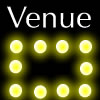
How are the acoustics? When sound comes in contact with an object it will either reflect, be absorbed, or use the object as a transmission device. Metal, glass, and concrete will all cause sound to bounce around like a super-ball. Wood will tend to make sound warmer (that's why all those recording studios have wood floors), thick material like curtains, carpet & people will mostly absorb sound. Also, see power.
Equipment
Power

Without electricity the show can't go on because all equipment needs juice. Take some time to add up the total amount of power required. Remember volts x amps = watts! Check the amperage and voltage rating on all the equipment, then apply the equation across everything you need to power. Generally you will express this in kilowatts (thousand watts) or in a number of circuits required. For example, if your total requirements are 2200 watts, or 2.2kw, this will generally "fit" on 1 standard circuit (not outlet, the WHOLE circuit).
It is not unusual to bring in diesel powered generators to provide power for events. Having a separate generator for sound and lights is standard since dimmer racks can easily dump noise into a sound system tied to the same main. Keeping it separate keeps it clean. Small portable sound systems can often use just the house wall outlets, but do the math!
A ballroom band will typically need several 20 amp circuits for their stage equipment. Add to that at least four circuits for the sound and monitor system, then add lights, projectors, catering and various other equipment. It adds up quickly and can often catch event planners of guard especially if someone is not coordinating the power. It is not uncommon for an event to require generators or 3 phase power connections. A typical touring audio system will require 3 phase, 200 amp power, while a touring lighting system is often 3 phase 400amp. It's required to have a house electrician on hand to make, inspect, and to a degree, take liability for the connections. Smaller ballroom shows can usually get by with the house power, but often the venue will stick you with an extra charge to make a power drop. Don't cut corners here. Saving that $100 won't seem worth it when the band strikes their first chord and everything goes black. Without power you can't have a show!
Sound
Choosing the right equipment for an event requires great coordination skills. What does the band need? What does the CEO need? Are the house lights adequate? A common pitfall I've seen is relying on a house sound system that is designed for business meetings for huge galas. Those ceiling speakers work fine when people aren't liquored up and they are pretending to take notes, but give them a few drinks and you'll never get them to shut-up. People talking in a ballroom raises the noise floor considerably. Those 6" ceiling speakers all wired together in a series suddenly won't command an audiences' attention. Ideally, one audio system should be used for the band, for the talking heads, and for announcements. You should hire a professional audio engineer to operate the equipment and to coordinate the audio requirements.
The weekend warrior band might have a system they throw in their trunk, but if they're pro, they will probably have a contract with a sound and lighting production company. Often they will have a contract rider that specifically states their technical requirements. In this case, hire a production company to fill the rider or you probably won't have a show. Also beware of the "band is bringing their system so we should be fine.." scenario. Often this means the band will try to mix from stage (where they have no idea how it sounds in front of the speakers.) Usually when I see this I am happy because it helps to clear the crowd out faster and I can go home. Generally it's not a great idea to let a musician touch the sound equipment. Don't get me wrong, I love them, but heed my advice. I stopped going to a bar that allowed musicians to run their own sound because every time I went in I'd find myself on-stage fixing that howling feedback problem, or that buzz in the system. Let the musicians play their instruments and hire a pro to mix the sound, everyone will be happier.
Read about live sound basics..
Lighting
Create an atmosphere with various types of lighting. Par fixtures on round-bases can quickly and dramatically add focus to elements of your room layout. Stage lighting can include anything from a few fixtures on aluminum tripod stands, to large spans of truss loaded with moving fixtures, color-changers, ellipsoidal fixtures, par fixtures, really the sky is the limit. If your event is outdoors, you must consider exit lighting.
Links
ProductionHUB.com - guide, directory and jobs for film and video
Event Guide & Wedding DirectoryCrew

Having the right venue, audience, and equipment does not ensure a smooth event. The technical crew collaborates with the artists and operates the equipment. Your contract with the venue may specify that you MUST hire their crew. Be careful what you sign! Often hotel A/V companies hire local students for shanty rates and then charge the end user $50 - $150 per hour. This is often not a case of "You get what you pay for." Truth is, most hotel A/V functions do not require a craftsman. I was that kid in middle school who always made the projector work in class. The point is: A 12 year old can do it. However, when your event includes a band, talking heads, an auctioneer, or a piano player, it can very quickly overwhelm that college student running the controls. I also find it interesting how these hotel chains schedule their crews. The 9-5 guy sets everything up, and then the 4-12 guy runs it. While it might make sense to someone drawing up an "efficient" schedule, this completely goes against the flow of YOUR show. Consider hiring a pro under these circumstances.
Beware of the sound man in a tie. Audio engineering is both art and science so top audio engineers are often part mad scientist and part artist.
Ask the right questions. "What's this circuit rated? What is unity gain?
Putting it all together.
I'll never forget the time I help setup a 12 box V-Dosc line array system in a college arena. We had the best crew and the best equipment. I handed a popular national radio personality the wireless microphone, he went up on stage, and it sounded Great...for about 10 minutes. That's when the 9-volt battery failed. It was purchased "on the cheap" from the local convenience store. Suddenly, $150,000 audio system meant nothing.
After witnessing many catastrophic events planned by committees of very dedicated people, it quite frankly frightens me to tried by "a jury of my peers". A committee can reek havoc on event planning when 12 people all have slightly different ideas and they really aren't talking to each other. The band subcommittee didn't tell the room decor subcommittee about the 20 foot tall speaker system that needs to go where the food subcommittee has their buffet planned. When this occurs, the absolute best thing you can do is stand back and just watch the show. I was never a 3 stooges fan, but this stuff is really funny.
The basics of live sound.
Microphones
Impedance
Microphones come in two general impedance categories; High Impedance and low impedance. Most professional microphones are low impedance. Take a moment to look at the spec sheet for a standard Shure SM-58 microphone. After reading this article, you should be able to understand most of the specifications of the mic. You will notice the 58 is rated at 150 Ohms. This is considered a low impedance, or Lo Z microphone. Impedance, measured in ohms at a given frequency, indicates the amount of resistance or opposition to the flow of energy that a circuit offers. Impedance is extremely important to gain structure.
Construction types
Condenser
Condenser mics use external electricity (phantom power) to polarize the back plate and the diaphragm. When sound waves strike the diaphragm, the distance distance between the back plate varies, resulting in a varying output of voltage. Condenser microphones are the most flexible, transparent, and accurate of construction types.
Dynamic
Dynamic microphones are easily thought of like a normal speaker in reverse. There is a fixed magnet that creates lines of magnetic flux. The diaphragm is attached to a voice coil. Sound waves move the diaphragm, disturbing the lines of flux which result in an output of voltage.
Ribbon
Pickup patterns
Microphones to an audio engineer, are like paint brushes to a painter. Pickup patterns refer to the way the mic "hears" sound. Hypercardioid microphones have a very tight pickup pattern, essentially the mic ignores more background noise around it. Cardioid microphones have more of a heart-shaped pattern, so it will hear more off- axis sound. Omni-directional microphones, as the name suggests, pickup sound equally from all directions.

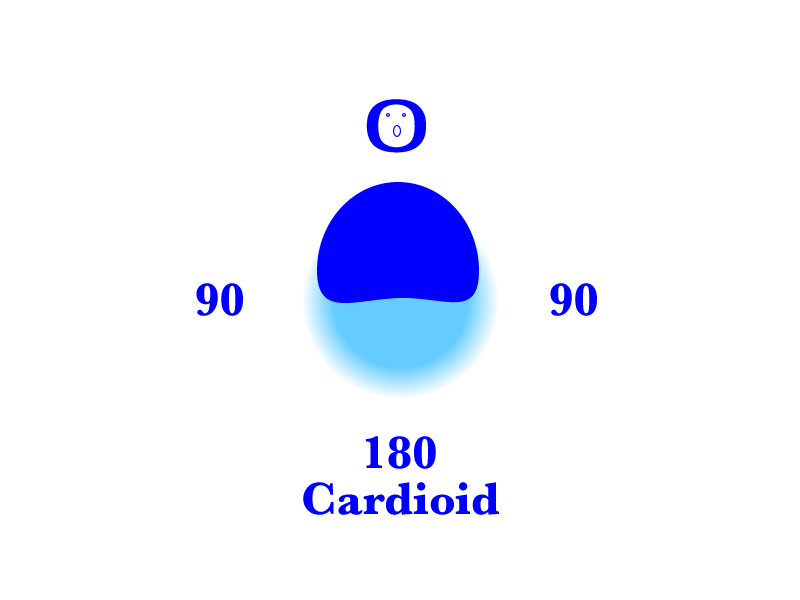
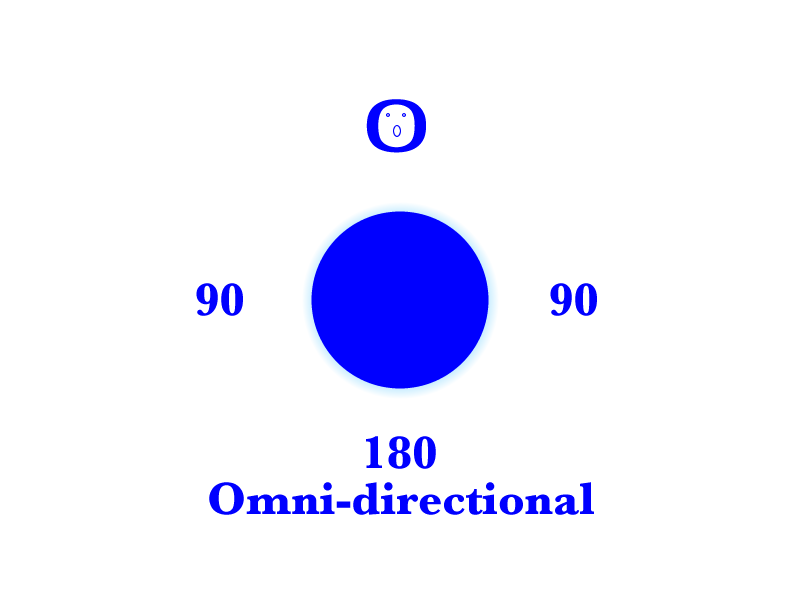
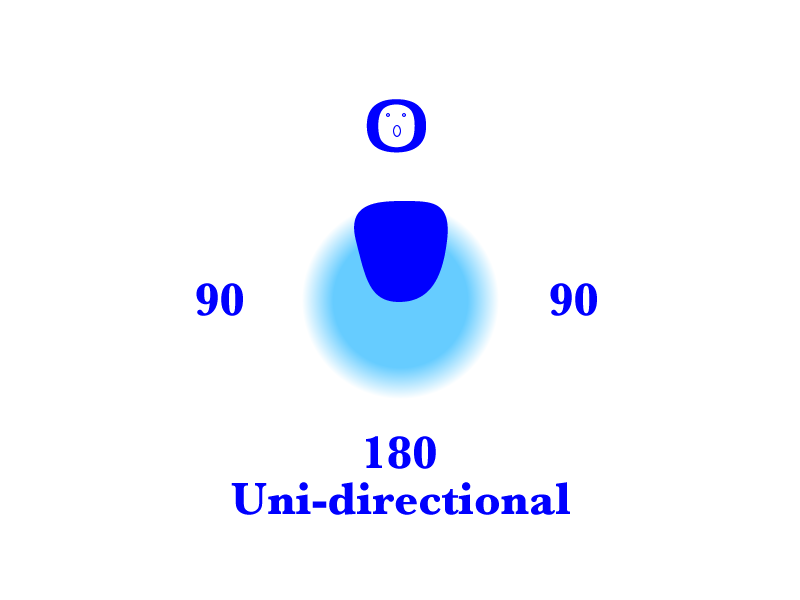
Snakes Systems
Digital Snakes
A digital snake system eliminates the need to run hundreds of analog audio connections between the stage and the various mixing consoles in use by converting the audio signals to digital at the stage. One cable carrying all the digital information is then connected to each console usually for control purposes only.
Sub-snakes
A sub-snake is often used to bring a group of audio connections to the main snake head. A typical sub snake is a small metal box with 12 microphone connections, with a fan-out on the other end of the wire.
Splitter snakes
Spit snakes allow a single input to be split and sent to multiple consoles. For example, the lead singers voice needs to be feed independently to the monitor engineer, to the front of house engineer, and to the an additional console that is broadcasting to satellite. Why bother? Each mix position has their own unique requirements to fulfill. They must work independently, but they also must work as a team. A common split snake system will consist of a snake head, a monitor trunk, a front of house trunk, and 2 fan outs.
Snake trunks
A snake trunk is the actual runs of wire. A standard concert snake F.O.H. trunk will carry 56 audio lines 200-300 feet all in one rather thick and heavy cable. On either end their is a quick disconnect, so that you make one connection and all of the individual lines are connected at once. On the console end, a "Front of house fan-out" is used, which connects to the main snake trunk and breaks-out into all the connections that are required on the console. The fan-out logically lives with the console in "the dog house" (a boxed-in area around all the audio connections on the mixing console) so all those connections to the console can be made at once and then quickly disconnected to move on to the next show.
Snake heads
A snake head is the center of any snake system. This is where all of your sub snakes, all the individual"home-run" audio connections, and the front of house and monitor trunks connect. The snake head will normally be on stage with the artists.
Consoles
Input Strips
Gain or trim, EQ, Auxiliary Sends, Fader, Assignments, Mute Groups, PFL (pre-fader listen), AFL.
Busses
Matrix
VCA
Gain Structure
Structure defined: a thing constructed; a complex entity constructed of many parts; "the structure consisted of a series of arches"; "she wore her hair in an amazing construction of whirls and ribbons"
wordnet.princeton.edu/perl/webwn -
They key to good gain structure is understanding that it is "constructed of many parts". Good gain structure begins with the source, namely your microphone or direct input. In this example we will walk through all the steps of setting good gain structure on a vocal microphone.
Starting with knowledge
What is the microphone impedance? What is the impedance of the guitar pickup? What about the keyboard? Once you understand your source, we can understand how to run it through the snake and get it into the console. Generally the amount of loss in a good quality microphone cable and snake is relatively minimal, but using low quality wires, or using the wrong types of wires can damage your gain structure. Once the signal is to the mixing console, it must be patched into the appropriate input. The only acceptable way to ensure good gain structure is to convert everything to low impedance at the stage. Keyboards, acoustic guitars, bass guitars, high impedance microphones should all be plugged into a DI box at the stage. A DI box will convert those HI-Z instruments into XLR outputs at a low impedance. We are patching a Shure 58, so just a standard XLR microphone cord should be all we need to get the signal to the snake head.At the console, you patch all of these balanced, low impedance sources into your balanced, low impedance microphone jacks. This only is the beginning of good gain structure. Do not confuse impedance with gain, while they are related, they are very different. Impedance is about resistance, gain is about amplitude. Gain is how hard you're sucking on the straw in your milkshake, impedance is more about the size of the straw and the thickness of the milkshake.
With the audio signal at the input of the console, we adjust the amount of gain to apply with the trim or gain control and the pad switch. This is where we adjust for the different output gains of all the instruments on stage. Our vocal microphone will have a fairly low output gain compared to the keyboard inputs. The best way to get good gain structure is to use the PFL or Solo switch which, even on the crappiest of Chinese stamped consoles, will allow the user to meter the gain level of any source BEFORE the fader controls on the board (hence pre-fader listen PFL). This is useful since we want enough gain that we can hear the source, and that the level is within the normal operating limits of the console. Too much gain will add noise, distortion, feedback, and other bad audio things. Not enough gain results in a weak or anemic sound with no punch or depth.
Metering the input with the PFL, we set our gain level to an average of about 0 db. Watching carefully for overloads 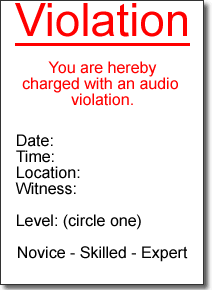 when the performer really gets down on the mic. Since our singer has a wide dynamic range (the soft parts are really soft, and the loud parts are really loud), we decide to insert a compressor on this channel to help control the dynamics a bit. Adjust the threshold setting of the comp to a little below the 0 db setting. This tells the compressor to take notice when the signal reaches that level. Set the ratio to something moderate like 3:1. Which means for every 3 db over the threshold, the compressor will only allow 1db past. A ratio of 4:1 will compress harder, a ratio of 2:1 will be lighter. Now, for the most important part, set the output gain of the compressor up 3-5 db to make up for the gain you are taking away! Failure to do this will potentially wreak havoc on your gain structure. Remember, it's all about unity.
when the performer really gets down on the mic. Since our singer has a wide dynamic range (the soft parts are really soft, and the loud parts are really loud), we decide to insert a compressor on this channel to help control the dynamics a bit. Adjust the threshold setting of the comp to a little below the 0 db setting. This tells the compressor to take notice when the signal reaches that level. Set the ratio to something moderate like 3:1. Which means for every 3 db over the threshold, the compressor will only allow 1db past. A ratio of 4:1 will compress harder, a ratio of 2:1 will be lighter. Now, for the most important part, set the output gain of the compressor up 3-5 db to make up for the gain you are taking away! Failure to do this will potentially wreak havoc on your gain structure. Remember, it's all about unity.
Our vocalist's next stop is typically in the pan control. If you are only amplifying output from, say, the left output you probably should pan your vocalist hard left. The pan control distributes the energy to the L & R output buses, if you have the pan at center, half your signal is going nowhere. If you are hooked up in stereo, then panning has less effect on overall gain structure.
Finally we've reached the fader. The most important number on the fader is 0 or Unity. This is the point in the fader where it's not boosting or cutting any of the singers voice. The signal is simply passing through the circuit. Finding the correct balance between the gain control and the fader is the heart of getting good gain. If you can barely move the fader off the bottom of the rail before the sound is ripping you head off, likely your gain setting is coming in too hot. It makes no sense to add 60 db of gain at the trim and then cut 65 db at the fader.
On to the busses, the vocal leaves the fader and is routed with assignment switches to buses of your choice. In this example, we'll route to bus 1 & 2 only, which is where I've chosen to assign all of the vocal mics and spatials for this band. At the bus we have the option of inserting more compression or a "second stage" of compression, but since I'm compressing all the vocals at the input strip, we'll skip that. But remember, if you insert any type of processor, be sure the circuit runs at unity.
We assign buss 1 & 2 to our master left & right buss. Here again, there is a fader, which should be somewhere near nominal (or unity or 0). Having you master fader too low or too high means poor gain structure, which leads to distortion, anemic sound, feedback, noise, and generally everything you want to avoid while doing sound.
Through another balanced cable, the singers voice leaves the console and enters the house EQ. Much like the strip EQ, there is plenty of room for damage here. The more powerful the EQ, the more likely a novice will destroy the entire mix. 31 bands of + or - 15 db adds up to a lot of control. Understand that each of those rails on the EQ works much like a fader on the console. If you go above 0, an small internal amplifier is boosting the signal, if you go below the 0, resistance is being added to the signal. The reason I promote subtractive EQ is simple. Take one slider on your EQ and put it to the top of the rail. You've just engaged an amplifier at full blast on that band of audio, which like any amplifier will add noise (I'll skip the discussion about phase coherency here). No big deal if you do it once, but what is important is the sum of all the noise (a little noise multiplied 31 times equals a lot of noise). Keep this theory in mind at every stage of your signal chain. Am I staying near unity, and am I adding noise? Using excessive amounts of EQ in either direction can easily destroy your gain structure. Notice that your EQ probably has a gain control. I've seen novice techs cutting 10db out of nearly every channel, but then adding nothing back with the gain control
The magic of unity!
Unity gain is essentially when the output equals the input. Gain structure is easily destroyed at the trim or gain control, and in the compressor, but the next step on our vocalists voice trip through the mixing console is also an alligator pit for poor gain structure. A ticket-able audio offence is when an engineer dials up good gain on the trim pot (potentiometer), inserts a compressor with a reasonable setting, and then goes nuts with the EQ on the channel strip.If your equalizer is totally flat, it should not be boosting or cutting any signal. If you are cutting 12 decibels (db) with each EQ control, your are drastically changing the gain structure. Try making sure your PA is correctly tuned, select another microphone, change the placement, or ask the drummer to tighten his drum head, and then consider using the strip EQ. If you must use the strip EQ, generally you should adhere to subtractive equalization, in other words, cut away what you don't like, and leave what is good. It's O. K. to boost a frequency here and there, but using subtractive EQ should always be your first choice. If you are forced to use large EQ changes, make sure you still have good gain at the compressor and ultimately with the PFL. If your fader is at the 0 point, the fader is said to be "at unity." This means the fader is not boosting the signal (adding gain) or impeding the signal (cutting gain).
Digital Consoles
The advent of high quality A/D (analog to digital), D/A (digital to analog) converters, and powerful computer hardware has given rise to the popularity of digital mixing consoles. All of the audio is converted to digital and processed with DSP (digital signal processors). The advantages of digital consoles are their flexibility and ultimately the amount of control. The paradox of digital consoles is that while people want them for their amazing ability to remember settings and their superior control capability, engineers often dislike the user interface and prefer the layout and simplicity of a well designed analog console. Certainly digital consoles have drawbacks that are slowly being overcome with better implementations of technology. Analog and digital technology constantly compliment each other in pro-audio. For example, most music is still recorded on analog tape for the warm & rich characteristics, then edited and mastered using digital technology. An interesting hybrid live console designed by Jim Gamble called the DCX avoids converting any audio to digital. Everything is kept analog except for the control systems. It is a digitally controlled analog mixing platform. Check out Digico Consoles they have a line of very popular high-end all digital solutions.
Front of House Consoles
F.O.H. Consoles mix the sound the audience hears. While essentially all sound consoles are designed on the same principles, consoles used at F.O.H. have special functionality designed around the job of mixing for the crowd. The architecture, the quality of electronics, and the ergonomics are all critical benchmarks of a good console.
Monitor Consoles
Powered Mixers
Out-Board Processing
Spatial
Dynamics
Speaker Management Systems
Amplifiers
Power ratings
Impedance Ohms
Output Configuration and connections
Speakers
Speaker Basics
Line Arrays, Point Source, Column
Conventional
Sub woofers
Monitors
In-Ear Monitor Systems
IEM systems replace the usual floor monitor on the stage with "ear-buds" the performer places in their ear and typically connects to a wireless receiver in a belt pack. The monitor engineer works with the artist who selects which instruments that want to hear and how they want them blended. In ear systems significantly reduce the amount of stage volume, making it easier to get a cleaner sounding mix for everyone. Often touring bands will have very complex mixes configured and often digital consoles become the tool of choice for their ability to quickly recall complex routing and processing. However, digital consoles are known to have a more "edgy" sound and combining this with ear buds that are more limited in frequency response will likely produce a "harsh" sound. Drummers often want to "feel" their kick drum, and therefore prefer a conventional floor monitor, and often a matching sub woofer. There are even products that essentially attach a speaker directly to the drummers throne.